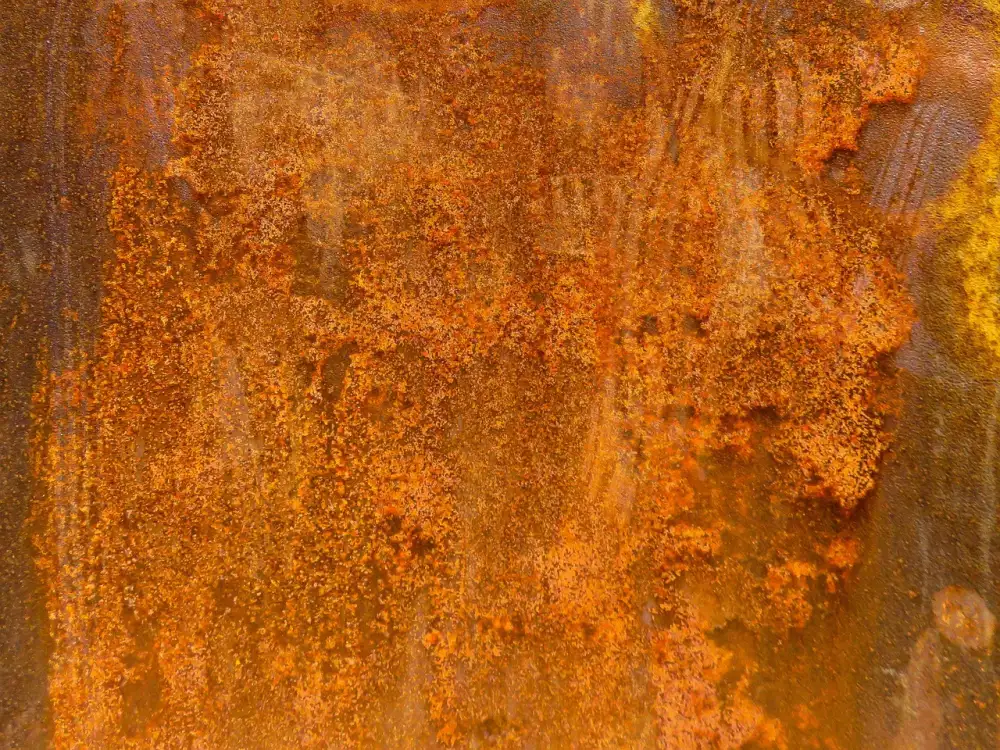Revive Your Rusty Cast Iron: A Step-by-Step Guide on How to Clean and Restore Your Beloved Cookware

Cast iron cookware has long been cherished for its durability and heat retention properties. However, over time, these beloved pieces can develop rust, which not only affects their appearance but also compromises their functionality. It is crucial to clean and restore rusty cast iron to ensure that it continues to be a reliable tool in your culinary arsenal. In this step-by-step guide, we will walk you through the process of reviving your rusty cast iron, so you can enjoy cooking with it for years to come.
Gather the Necessary Supplies
To revive your rusty cast iron, you will need a few essential supplies. First and foremost, you'll need a stiff-bristled brush or scrubber to remove the rust. Look for one specifically designed for cast iron cleaning to avoid damaging the surface.
Next, gather some mild dish soap or a cast iron cleaner. Avoid using harsh chemicals or abrasive cleaners as they can strip away the seasoning on your cookware.
You'll also need a sponge or cloth for wiping down the cast iron. Make sure it's non-abrasive to prevent scratching the surface.
For removing stubborn rust, white vinegar is an excellent option. It's a natural acid that helps dissolve rust without causing any harm to your cookware.
Lastly, you'll need some paper towels or clean cloth for drying the cast iron after cleaning. Additionally, vegetable oil or another type of cooking oil is necessary for seasoning and protecting the cast iron from future rusting.
With these supplies in hand, you're ready to begin reviving your beloved rusty cast iron cookware!
Scrubbing Away Surface Rust
Scrubbing away surface rust is the first step in restoring your beloved cast iron cookware. Start by using a stiff brush or steel wool to gently scrub the rusted areas. Make sure to remove any loose rust particles and dirt. Avoid using soap, as it can strip away the seasoning. Instead, rely on elbow grease and water to clean the surface thoroughly. Once you have scrubbed away the surface rust, rinse the cast iron with warm water and pat it dry with a clean towel.
Removing Stubborn Rust with Vinegar
If the surface rust on your cast iron cookware is proving to be stubborn, don't worry! There's a simple and effective solution: vinegar. Vinegar is a mild acid that can help dissolve rust and make it easier to remove.
To use vinegar for rust removal, start by filling a container large enough to submerge your cast iron in with equal parts white vinegar and water. Place the rusty cookware into the mixture, making sure it is fully submerged. Let it soak for at least a few hours or overnight.
After soaking, take a scrub brush or sponge and gently scrub away the loosened rust. You may need to apply some pressure for more stubborn spots. Be careful not to scrub too hard as you don't want to damage the surface of your cast iron.
Once you have removed as much rust as possible, rinse the cookware thoroughly with water to remove any remaining vinegar residue. Dry it completely using a towel or by placing it in an oven set to low heat for about 10-15 minutes.
Remember, this method may remove some of the seasoning on your cast iron, so you will need to re-season it afterward (which we will cover in the next section). But don't worry, this step is essential for restoring your beloved cookware back to its former glory.
Now that you know how to tackle stubborn rust with vinegar, let's move on to restoring the cast iron's seasoning in the next section.
Restoring the Cast Iron's Seasoning
Once you have successfully removed the rust from your cast iron cookware, it's time to restore its seasoning. This step is crucial as it helps create a protective layer on the surface of the cast iron, preventing future rust and enhancing its non-stick properties.
To restore the seasoning, start by applying a thin layer of vegetable oil or flaxseed oil all over the cast iron. Make sure to cover every nook and cranny, including the handle and sides. Use a paper towel or cloth to evenly distribute the oil.
Next, preheat your oven to 350°F (175°C). Place a sheet of aluminum foil on the bottom rack to catch any drips. Then, carefully place your oiled cast iron upside down on the top rack of the oven. This allows any excess oil to drip off during baking.
Bake your cast iron for about one hour. The heat will polymerize the oil, creating a hard and durable seasoning layer. After an hour, turn off the oven and let your cookware cool completely inside before removing it.
Once cooled, inspect your cast iron for any uneven spots or sticky residue. If needed, repeat the seasoning process until you achieve a smooth and glossy finish.
Remember that restoring seasoning is an ongoing process. Each time you use your cast iron, it will continue to build up its natural non-stick coating. Regularly cooking with oils and fats will help maintain and improve this protective layer over time.
By restoring the seasoning of your cast iron cookware, you not only prevent rust but also enhance its cooking performance. So take care of your beloved cookware, and enjoy rust-free culinary adventures for years to come!
Drying and Oiling the Cast Iron
Once you have thoroughly cleaned and removed all rust from your cast iron cookware, it is important to dry it properly to prevent any moisture from causing future rust. Start by using a clean cloth or paper towels to remove any excess water from the surface of the cast iron. Next, place the cookware on a stovetop burner set to low heat for a few minutes. This will help evaporate any remaining moisture.
After drying, it is crucial to apply a thin layer of oil to protect the cast iron from rusting again. You can use vegetable oil, flaxseed oil, or even lard for this purpose. Pour a small amount of oil onto a cloth or paper towel and rub it all over the surface of the cookware, including the handle and edges.
Make sure to coat every inch of the cast iron with oil, as this will create a protective barrier against moisture and oxygen. Once oiled, place the cookware back on the stove over low heat for about 10 minutes. This will allow the oil to penetrate into the pores of the cast iron and form a protective seasoning layer.
Finally, turn off the heat and let the cast iron cool down completely before storing it. It is essential to store your newly restored cast iron in a dry place away from any moisture or humidity that could potentially cause rust.
By following these steps and properly drying and oiling your cast iron cookware after cleaning, you can ensure its longevity and enjoy many more delicious meals without worrying about rust.
Tips for Preventing Rust in the Future
To prevent rust from reappearing on your beloved cast iron cookware, here are some helpful tips:
1. Dry thoroughly: After cleaning, make sure to dry your cast iron completely. Any moisture left on the surface can lead to rust formation.
2. Oil regularly: Apply a thin layer of oil to your cast iron after each use. This will create a protective barrier against moisture and help maintain its seasoning.
3. Store properly: Store your cast iron in a dry place with good ventilation. Avoid stacking other cookware on top of it, as this can trap moisture and promote rusting.
4. Use regularly: Regular use of your cast iron helps to keep it seasoned and prevents rust from developing. So don't let it gather dust in the back of your cupboard!
5. Avoid soaking: While it's important to clean your cast iron, avoid soaking it in water for extended periods as this can cause rusting. Instead, opt for gentle hand washing and immediate drying.
By following these simple tips, you can enjoy a rust-free cast iron that will continue to serve you well in creating culinary masterpieces for years to come!
By following the steps outlined in this guide, you can revive your rusty cast iron and ensure its longevity in your kitchen. Regular cleaning and maintenance are key to keeping your beloved cookware rust-free.
Remember to always dry your cast iron thoroughly after each use, as moisture is the main culprit behind rust formation. Applying a thin layer of oil before storing it will also help create a protective barrier against moisture.
Additionally, avoid using harsh detergents or abrasive scrubbers when cleaning your cast iron, as they can strip away the seasoning and promote rusting. Instead, opt for gentle scrubbing with salt or a nylon brush.
With proper care, your cast iron will continue to provide you with delicious meals for years to come. So go ahead and enjoy cooking with confidence, knowing that your cast iron is clean, restored, and ready to create culinary masterpieces once again!
Published: 21. 12. 2023
Category: Home



